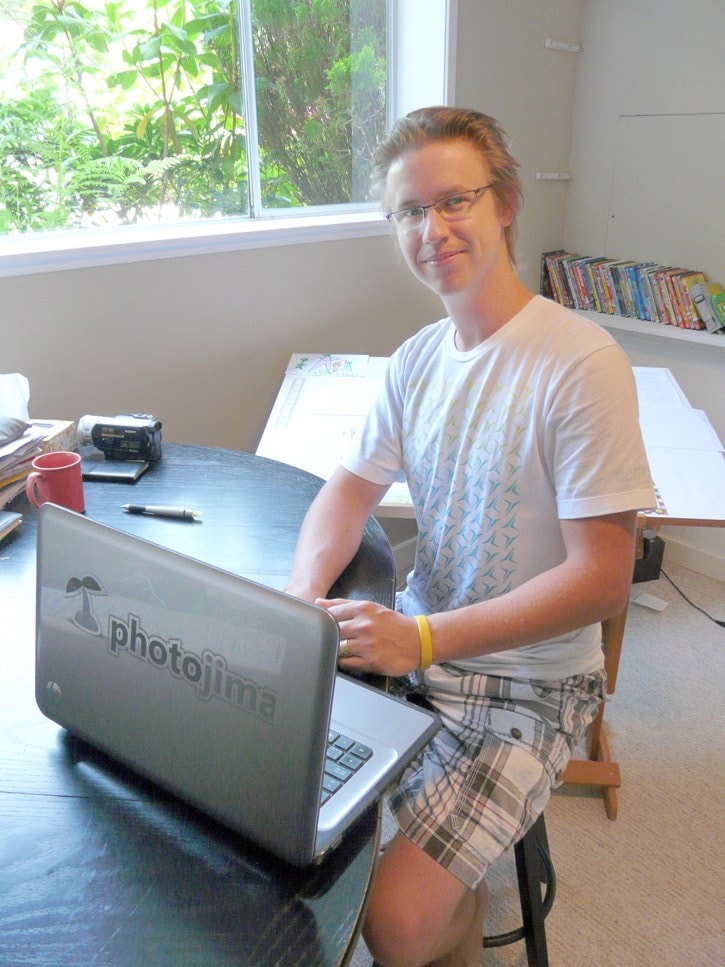Mark Hollas is demonstrating his Internet site to a Peace Arch News reporter when the White Rock resident spots a tiny aesthetic anomaly.
An element on one page is ever-so-slightly out of alignment and will require an adjustment by Hollas, the creator, designer and software engineer of the new photo-sharing site, Photojima.com
“Did I mention it’s a beta?” Hollas says.
“I know what I’ll be doing this afternoon.”
Photojima takes a more selective approach to photo-sharing and social networking than its popular predecessors. Members can decide exactly who can view their pictures and comment on them.
Hollas says he realized something like Photojima was needed because the 30-year-old married father-of-three was hesitant to post family pictures, especially of his children, online.
“I don’t want to share my own photos on my (public) site because they’re too personal.”
Hollas, a web designer, decided to build his own site with improved privacy controls.
At the time, he was working in Japan, so his first version was designed to operate in English and Japanese.
But before the website could be properly launched, the March 11, 2011, tsunami hit Japan, killing thousands of people and tearing apart the Fukushima power plant that proved to be too close to the Hollas family home.
“Our city was dusted with nuclear fallout,” he says.
The website would have to wait, while Hollas and his family dealt with the more immediate priority of returning to Canada.
Now that they’ve settled in, he’s been able to find time to resume work on the site.
It went live on June 11 – a ‘soft’ launch designed to give Hollas time to swat the inevitable bugs, such as the alignment issue that surfaced during the demo.
The crucial stuff works just fine, he says.
“It’s doing what it needs to do.”
People can post photos, confident they will have control over who can see them.
“The photos that you upload are guaranteed safe,” Hollas says. “That’s the important thing. It’s a very secure server.”
He’s also adding features.
A few days before the interview, Hollas installed buttons that allow Facebook and Twitter users to connect.
The name Photojima blends the English word ‘Photo’ and the Japanese word “Jima” meaning island, a metaphor for the tightly controlled access Hollas offers.
“It’s individual-to-individual,” Hollas notes. “If you’re not a set person, you’ll never be able to see (someone else’s photos).”
The website explains the approach: “You can welcome the people important to you onto your ‘Islands’ for them to enjoy as well. Once a friend is on your ‘Island,’ you can allow them to add their own pictures too! Since this is your zone, only you and the friends on your Island can see those pictures…”
Hollas says his target clients are people he describes as “picture-takers” – individuals who want to share snapshots who may not have a lot of technical knowledge – as well as people who would like to view those same snapshots without fussing with a complicated interface.
“…so that Grandma and Grandpa, who may not have a lot of computer skills, can see it with only a few clicks.”
The site also offers a way for children to post pics, with precise parental controls that limit their audience to family members only.
The free version of the site restricts users to web-quality versions of their photos.
But the full-quality versions can be accessed at any time for a fee.
Hollas is hoping other people will find it an attractive business model.
“We’re hoping we can rustle up some investment capital,” he says.
The site can be visited online at www.photojima.com
It may be part of a wider trend to more selective social media.
A number of recent news articles, including a May 19 Economist magazine piece, have noted a rise in networks that allow users a greater degree of control over who sees their postings.
